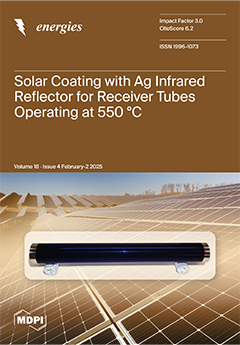CO
2-enhanced tight oil production can increase crude oil recovery while part of the injected CO
2 is geologically sequestered. This process is influenced by factors such as gas injection rate, oil/gas viscosity ratio, and contact angle. Understanding how these factors affect
[...] Read more.
CO
2-enhanced tight oil production can increase crude oil recovery while part of the injected CO
2 is geologically sequestered. This process is influenced by factors such as gas injection rate, oil/gas viscosity ratio, and contact angle. Understanding how these factors affect recovery during CO
2 non-mixed-phase substitution is essential for improving CO
2-enhanced tight oil production technology. In this study, three-dimensional pore structure was numerically simulated using physical simulation software. The effects of three key parameters—the gas injection rate, contact angle and viscosity slope—on flow displacement during a CO
2 non-mixed-phase drive were analyzed. In addition, the study compares the fluid transport behavior under mixed-phase and non-mixed-phase conditions at the pore scale. The simulation results show that increasing the replacement velocity significantly expands the diffusion range of CO
2 and reduces the capillary fingering phenomenon. In addition, the saturation of CO
2 increases with the increase in the viscosity ratio, which further improves the diffusion range of CO
2. The wetting angle is not simply linearly related to the drive recovery, and the recovery is closely related to the interfacial tension and capillary force under the influence of wettability. The recoveries under mixed-phase conditions were slightly higher than those under unmixed-phase conditions. During the mixed-phase replacement process, CO
2 is dissolved into the crude oil, resulting in oil volume expansion, which improves the distance and extent of CO
2 permeation.
Full article





